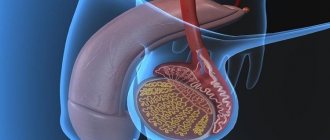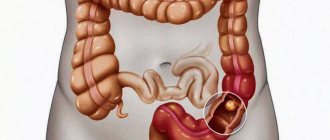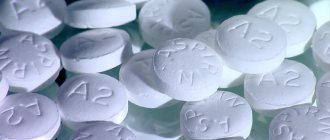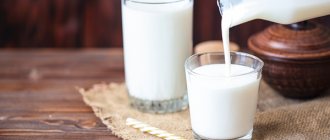Advantages and disadvantages of garlic
The onion family vegetable has been known since ancient times.
The beneficial composition and healing properties of this product were known 6,000 thousand years ago: it was grown and used in Central Asia as a medicine. Garlic has a whole range of positive properties; the healing effect that this spice has is achieved due to the content of many valuable substances in it.
These include:
- Vitamins: C, E, K, H, many representatives of group B;
- Micro- and macroelements: sulfur, selenium, phosphorus, potassium, iodine, zirconium, copper, germanium, iron, zirconium;
- Biologically active components: phytoncides (aimed at destroying viruses), adonisitol, allicin and pentosan (prevent the development of blood clots), pectin (improves digestion), glucosides (increase tissue sensitivity to insulin);
- Essential oils;
- The product is considered low-calorie: 100 g of garlic contains only 0.6 g of fat, 6.8 g of protein, the main share is carbohydrates, of which there are 26.3 g in the spice.
Thanks to its individual components, the vegetable has qualities that have a positive effect on human health. Its most famous property is its ability to fight fungi, bacteria and viruses. It is for this reason that many therapists advise eating garlic in the autumn-winter period, when the season of colds and viral diseases begins.
In addition, the product is valued for its other features:
- Improving the functioning of the cardiovascular system, lowering blood pressure and eliminating vascular spasm;
- Prevention of the development of atherosclerosis and diseases of the genitourinary system, the occurrence of heart attack and stroke, the formation of stones in some internal organs;
- Reducing the concentration of cholesterol in the blood;
- Stimulating the production of sex hormones, increasing potency;
- Providing anthelmintic action;
- Destruction of pathogenic microorganisms and normalization of microflora in the intestines;
- Relieving swelling of the respiratory tract, removing phlegm from the bronchi;
- Preventing the formation of cancer cells.
Regular consumption of garlic helps not only strengthen the immune system, but also increase human life expectancy. This spice is especially effective in the fight against worms: the natural product is an excellent alternative to synthetic drugs, so it can be used as a medicine to treat children.
Garlic has a positive effect on the human body. There are a number of benefits to eating it every day, but garlic can also harm the body if you eat too much of it. Unfortunately, not everyone knows about this.
Garlic successfully fights bacteria.
If you consume vegetables in reasonable portions, you can protect your body from various harmful microorganisms, including those that cause the development of dangerous ailments.
- In addition, garlic cleanses blood vessels and the liver, normalizes the functioning of the gastrointestinal tract.
- Its use helps strengthen the immune system
- It is a preventive measure for stroke and heart attack.
- This vegetable also improves potency,
Along with the listed advantages, garlic has many disadvantages, but little is known about them. This concerns not only its unpleasant aroma, but also an increase in appetite, which leads to excess weight.
Cons of garlic:
- Garlic should not be consumed by patients with hemorrhoids,
- it is harmful during pregnancy and breastfeeding,
- This vegetable should not be eaten if you have liver disease,
- gastrointestinal tract,
- kidney,
- But even a healthy person can consume garlic in reasonable quantities.
Garlic has a positive effect on the human body. There are a number of benefits to eating it every day, but garlic can also harm the body if you eat too much of it. Unfortunately, not everyone knows about this.
Is it possible to eat garlic if you have pancreatitis?
Many people probably don’t even have information about what processes in the body the pancreas is responsible for. Moreover, not everyone will be able to answer in which part of the peritoneum this organ is located. In fact, it is absolutely not worth belittling the importance of the pancreas; without its activity, it is impossible for a single person to have full health.
The two main functions that the organ performs are endocrine and exocrine. The first of them is the production of hormones important for the body (insulin, glucagon, somatostatin), the other is based on the production of enzymes that take an active part in the process of digesting food. Without this phenomenon, the food bolus will remain undigested in the stomach for a long time, and the beneficial components entering the body along with food will not be able to be fully absorbed.
Under the influence of external factors: due to overeating, abuse of alcohol and fatty foods, the pancreas can become inflamed. As a rule, this process is accompanied by a narrowing of the pancreatic ducts and stagnation of fermentation, resulting in severe swelling of the organ. Pancreatic juice, subject to normal functioning of the pancreas, is sent to the duodenum, where it begins to work on digesting food.
But if it lingers in the pancreas, it begins to corrode the tissues of the organ itself. Often, in search of a way out of the pancreas, enzymes penetrate into nearby blood vessels. Severe intoxication of the body occurs, which becomes the root cause of severe symptoms: pain in the left hypochondrium (sometimes in the right part of the abdomen or in its middle area), nausea and incessant vomiting, flatulence and diarrhea, general malaise.
The patient’s condition is significantly aggravated if he continues to eat food that irritates the mucous membranes of the gastrointestinal tract and the pancreas itself: “heavy” food requires too much pancreatic juice for its breakdown. When the inflamed pancreas begins to work in increased mode, the enzymes in it stagnate in much larger quantities. This is precisely the essence of the dependence of the state of the pancreas on the food we eat.
If you have pancreatitis, you are not allowed to eat not only fatty foods and fried foods, but also spicy, excessively salty foods. Any spices are strictly prohibited, and garlic is no exception in this matter. A vegetable from the onion family is a rather spicy product with a sharp, specific aroma and taste.
However, in the presence of any pathologies of the gastrointestinal tract or other organs of the digestive system, garlic in its pure form or as a flavoring additive is strictly prohibited. The juice of this vegetable contains sulfanyl-hydroxyl ions, which, when entering the body through the blood, corrode the mucous membranes and cause various disorders of the digestive process.
Garlic for inflammation of the pancreas
A disease associated with inflammatory processes in the pancreas is called pancreatitis. Patients with pancreatitis are strictly prohibited from including garlic in their diet.
When the pancreas becomes inflamed, its ducts become narrowed. At the same time, when eating garlic, there is an increased production of gastric juice by the pancreas.
As a result, the ducts cannot pass such an amount of juice; it remains in the gland and, being a strong chemical, begins to have a negative effect on the organ.
For this reason, inflammation of the pancreas occurs, which entails a subsequent worsening of the disease; we can say that garlic can provoke inflammatory processes in the pancreas.
In acute cases of cholecystitis, treatment should begin with laxatives to cleanse the liver. These are aloe, rhubarb, joster, senna, buckthorn. It should be borne in mind that the more acute the pain and the stronger the fever, the more powerful laxatives need to be used. Acute conditions are usually treated in a hospital.
Following laxatives, medicinal plants are used that would best cleanse the liver, that is, choleretic and antispasmodic herbs are used. Immortelle, celandine, aloe, barberry, gentian, dandelion, rhubarb, volodushka, curly sorrel, and mint have good choleretic and antispasmodic properties.
For acute cholecystitis with elevated temperature and severe pain, decoctions or powder of elecampane rhizome have long been used.• 2 teaspoons of crushed root, pour 400 ml of cold water and leave at room temperature for 8-10 hours. Then add 4 tbsp to the infusion. spoons of honey (four tablespoons) and drink in 4 doses 40 minutes before meals.
Take the medicine for a week, repeat the course after 5 days.• Grind the elecampane root into powder, mix with honey, roll into balls and take on an empty stomach with water. The norm is 2 teaspoons of crushed root per day. • Pour 1 teaspoon of crushed elecampane root into 200 ml of boiling water, let it brew for 15 minutes and drink in 2 doses before meals. Take 2 glasses of decoction per day. Can be sweetened with honey.
Throughout the first day, the patient is prescribed only liquid intake. These can be warm, weak sweet teas, natural juices or compotes of fruits and berries, always diluted half with water. Another option is to drink 2-3 glasses of rosehip decoction in small portions throughout the day.
As the pain in the stomach decreases, the next couple of days you are allowed to eat pureed foods, for example, mucous and pureed soups (rice, oatmeal), pureed rice or oatmeal, jelly, jellies, mousses from sweet fruits and berries. The diet for cholecystitis assumes that the patient’s condition will improve, so low-fat cottage cheese, lean pureed, steamed meat, lean boiled fish are introduced into the diet, you can eat some white crackers.
Meals should be divided into 5-6 servings per day. Next, after about 5-7 days of the diet for cholecystitis, doctors prescribe the patient diet No. 5a, and 3-4 weeks later, after the acute symptoms disappear, diet No. 5. Do not forget that with improper nutrition, acute cholecystitis can become chronic.
Diet No. 5a is a complete, gentle diet with a limitation of fats and table salt. Proteins and carbohydrates are contained in dishes in accordance with the physiological norm. From your daily diet you should exclude cold dishes, dishes that enhance the processes of fermentation (peas, beans) and putrefaction (fatty meat) in the intestines.
Products that stimulate bile secretion and the secretory activity of the stomach and pancreas will also not be useful. These are spices, smoked meats, spicy foods and rich in essential oils - onions, garlic, radish. Any dishes must be steamed or boiled, pureed and not cold.
Diet No. 5 is not much different from Diet No. 5a. There are more liberties here, including the fact that dishes can not only be boiled or steamed, but also vegetables can be baked. Meat and fish can be baked after boiling them in lightly salted water. It is also not necessary to eat only pureed food.
To avoid the occurrence of such a dangerous disease as pancreatitis, it is important to promptly follow certain nutritional rules:
- It is necessary to eat several times a day, and the portions should not be large.
- The pancreas will appreciate the idea of separate nutrition, in this case it will be easier for it to cope with the production of enzymes necessary for digesting food.
- You should consume as little as possible products with dyes, food additives and preservatives.
- It is imperative to arrange fasting days, during which you should eat light food, for example, low-fat cottage cheese, vegetable soups.
- It will not be superfluous to use various herbal infusions. Rosehip infusion helps the pancreas function well.
Spices have been used by humans in cooking since ancient times. Initially, bitter and pungent products were used in the manufacture of medicinal decoctions and balms. Garlic was even credited with the ability to fight evil spirits.
Today, this spice is widely used throughout the world, it is still used in medicines for its antiseptic properties, but it is known more as a savory seasoning for dishes.
It is important to know how garlic affects the organs of the human body and well-being. Can a vegetable harm the pancreas and in what quantities should it be consumed if there are problems with this organ.
Garlic contains a large number of elements useful for the human body, although doctors have not fully come to an opinion about its benefits and harms.
Is garlic harmful? Uncontrolled use of garlic for pancreatic disease can lead to undesirable consequences and worsening of the condition.
Since it has juice-containing properties, garlic stimulates the active production of enzymes. The benefits of garlic include:
- acceleration of metabolic processes;
- blood and liver cleansing;
- helping to get rid of parasites.
When using garlic, you should be aware of its irritating properties, since if taken incorrectly, garlic can cause inflammation of the pancreas or pancreatitis and harm the body.
Pancreatitis is an inflammation of the pancreas that is caused by various factors:
- unhealthy diet;
- blockage of canals by parasites or stones;
- taking large amounts of alcohol or medications;
- stress, etc.
The gland begins to process itself and an inflammatory process occurs. In acute pancreatitis, using garlic in food will only worsen the situation. Since the only way to relieve inflammation is to temporarily stop the production of the enzyme in the gland, to do this, food should not enter the stomach, especially garlic, since it itself stimulates the active functioning of the pancreas.
In the case of chronic pancreatitis, depending on what caused it, you can use garlic. Some folk methods suggest garlic to treat pancreatitis.
Whether garlic is possible or not for chronic pancreatitis can only be decided by the attending physician. There is an opinion that in the chronic form, garlic can even help in treatment, as it improves intestinal function, promotes the removal of toxins that are formed during the inflammatory process, and can also start the regeneration process.
This issue is controversial. In case of exacerbation, there is no question of using it, since it will only intensify the already existing inflammation. Those who are familiar with exacerbations of pancreatitis can say that during the acute phase of the disease, you do not want to eat anything, since the disease is accompanied by severe pain and heaviness, not to mention garlic.
For different pancreatic diseases, the norms for using garlic are not the same:
- For example, in type 1 diabetes, eating garlic will not affect the gland in any way. In addition to enzymes, the pancreas also produces insulin, a hormone that regulates blood sugar.
It happens that for some reason insulin becomes insufficient and diabetes mellitus develops; inflammation may be absent, but the gland produces an insufficient amount of the hormone. In such cases, eating garlic will not negatively affect your health if you do not overeat it. In type 2 diabetes, when the gland produces a sufficient amount of the hormone, but the blood vessels do not allow it to pass through, garlic can have a positive effect. It cleanses the blood, strengthens blood vessels, and also stimulates the production of glycogen in the liver - a substance that slows down the breakdown of insulin.
It is strictly forbidden to introduce garlic into the diet for acute pancreatitis. This difficult period is accompanied by disruption of the digestive system, stool disorders, and severe pain attacks.
Doctors, depending on the patient’s condition, prescribe a diet based on maximum avoidance of harmful foods that can irritate the mucous membranes of the gland. Even seemingly harmless vegetables and fruits are often excluded. What can we say then about garlic and pancreatitis? In severe cases, they resort to fasting, and the necessary proteins and carbohydrates are supplied to the patient through droppers or special balanced mixtures.
Interaction between vegetable and organ
Benefits and harms
Garlic contains a large number of elements useful for the human body, although doctors have not fully come to an opinion about its benefits and harms.
Important! The most useful substance in garlic is allicin, it is a powerful antioxidant and frees the body from free radicals. Allicin is also an irritant, a sedative and an expectorant.
Is garlic harmful? Uncontrolled use of garlic for pancreatic disease can lead to undesirable consequences and worsening of the condition.
How does it affect?
Since it has juice-containing properties, garlic stimulates the active production of enzymes. The benefits of garlic include:
- acceleration of metabolic processes;
- blood and liver cleansing;
- helping to get rid of parasites.
When using garlic, you should be aware of its irritating properties, since if taken incorrectly, garlic can cause inflammation of the pancreas or pancreatitis and harm the body.
Garlic for inflammation of the pancreas
- It is bactericidal, killing viruses, microbes, fungi and bacteria. And when used externally, it can accelerate the regeneration of damaged tissue.
- Improves heart contraction, prevents cholesterol formation and atherosclerosis. Also reduces blood pressure and vascular spasm.
- Ensures the removal of sputum and its dilution, reduces swelling of the respiratory tract;
- Kills cancer cells, preventing many types of cancer.
- Strengthens the body's immune system, resisting viruses and infections.
- Helps prevent the formation of liver stones and prevents liver thickening.
- Increases the intensity of sex hormone production. When excreted in urine, it disinfects the system, thus preventing inflammation.
- It has been proven that regular intake of garlic can even protect against senile dementia and generally prolong human life.
- This is a faithful assistant in case of vitamin deficiency and the fight against worms.
Doctors know that garlic has a positive effect on the body's digestive system. It activates the synthesis of enzymes, regulates the intestinal muscles, thereby ensuring proper absorption of food. But everything is not as simple as it seems at first glance.
Pancreatitis and garlic are incompatible! There is no talk of any benefit to the digestive system if the patient is diagnosed with inflammation of the pancreas. Such a hot spice will inevitably worsen the clinical picture and cause new attacks.
Both diseases are interrelated, and therefore they are often observed in the patient together.
In medicine, cholecystitis is usually called inflammation of the gallbladder, an organ that is a kind of reservoir for storing liver bile. Connecting at the entrance to the duodenum, pancreatic juice and bile, which is produced by the liver, begin their joint activity to digest food.
Any inflammatory process leads to the fact that the outflow of fermentation from both organs is disrupted, substances begin to stagnate and destroy cellular structures. Often, under conditions of increased pressure inside the ducts, bile is refluxed into the pancreas, as a result of which it is exposed to a double aggressive effect: both bile and its own enzymes.
Pancreatitis and cholecystitis require adherence to a diet, and the principles of special nutrition are identical for both one pathology and the other. First of all, this means giving up fatty foods, salty, hot and spicy dishes, fresh baked goods and sweets, fast food, chocolate, cocoa, alcoholic beverages and coffee. Your preference should be given only to easily digestible and at the same time healthy products.
Just like with pancreatitis, cholecystitis prohibits eating garlic. Once inside, the spicy vegetable quite irritates the mucous membranes of the gastrointestinal tract, thereby provoking maximum production of pancreatic juice and contraction of the gallbladder. This circumstance can easily cause an exacerbation of both diseases.
Experts note that against the background of only one cholecystitis, garlic can still be consumed, but only during a period of stable remission and not in its pure form, but as an additive to various dishes. The quantity of this product should be limited: you cannot abuse the permission of doctors and excessively season dishes with this spice.
With pancreatitis, it is undesirable for the pancreas to work at full capacity and produce enzymes in abundant quantities. Due to the inflammatory process occurring in this organ, severe swelling occurs, which entails narrowing of the ducts and further disruption of the release of pancreatic juice into the duodenum.
In toga, it turns out that the enzymes contained in it direct all their forces not to the breakdown of food, but to the destruction of the tissues of the organ itself. In simple words, the pancreas is destroyed by its own juice. The most important danger that lies in this process is the development of pancreatic necrosis, a phenomenon accompanied by the death of the cellular structures of the pancreas.
That is why garlic and other products that activate the production of pancreatic fermentation are strictly prohibited in case of inflammation of the pancreas.
It is worth remembering that pancreatitis is a disease characterized by the aggressiveness of its course. In the most severe cases, it can even be fatal. That is why it is so important to follow all the principles of the prescribed treatment, as well as proper nutrition recommended by the doctor.
It is not difficult to guess that the disease has worsened: the patient develops pronounced symptoms, he is tormented by severe pain in the left hypochondrium, nausea occurs, which from time to time is accompanied by profuse vomiting, flatulence is also observed, and stool disturbances occur. Typically, such a critical condition lasts several days, but it is at this stage that it is very important to support both yourself and the affected pancreas. In this regard, experts recommend adhering to the three golden rules of ensuring cold, hunger and peace.
Let's figure out what these points mean.
- The acute form of pancreatitis requires treatment exclusively in a hospital setting. It should be understood that this is not a disease that can be suppressed using traditional medicine or improvised medicines available in a home medicine cabinet. But in the first hours of an exacerbation, before the ambulance team arrives, you can use a heating pad with ice, which must be applied to the area where the pancreas is located. This will help reduce the pain somewhat.
- Hunger and peace - let's consider these points together. The second concept means providing rest not only to the sick, but also to the damaged organ. This can only be achieved under the condition of complete fasting. Pancreatic enzymes are produced during chewing and subsequent intake of food into the body. Refusal to eat will help the pancreas rest, which it really needs at this stage. Such measures will allow it to recover to further establish its previous activities.
In connection with the above, it becomes clear that neither garlic nor any other products should be consumed during the acute phase of pancreatitis. The beloved spice is an irritant of the mucous membranes of internal organs and a strong stimulator of fermentation. Ignoring the ban on eating garlic during inflammation of the pancreas can lead to the most unpleasant consequences.
The chronic form of the disease develops due to acute pancreatitis. The disease is incurable; it tends to periodically worsen, giving way to resting phases. Maintaining proper nutrition contributes to the fact that pathology manifests itself extremely rarely.
Since many products contain garlic, you should also be wary of their use. These include:
- Marinades and pickles;
- Smoked meats and lard;
- Ketchup, various sauces and mayonnaise;
- Some types of cheeses.
By the way, these products themselves are prohibited in the presence of a disease such as pancreatitis. In any case, when buying this or that food in a store, pay close attention to the composition: there should definitely not be any garlic in it.
At this stage, the disease is gradually receding. This does not mean that a complete recovery process is taking place: pancreatitis cannot be completely cured - the symptoms characteristic of inflammation of the pancreas disappear, and the patient begins to feel confident. Gastroenterologists also make their own adjustments: they allow some changes to the diet, including some foods that were previously prohibited.
Some experts believe that during this period the patient can already consume garlic, but in limited quantities and in a certain form. Thus, they allow this product to be eaten, provided that it is previously scalded with boiling water. In addition, in their opinion, it is permissible to add this spice to dishes that are subsequently stewed.
Other specialists, on the contrary, do not share this point of view, still prohibiting their patients from eating garlic in any form. Thus, there is no clear opinion on this issue. But it is best, in order to avoid repeated attacks and the occurrence of unwanted complications of the disease, to avoid this spicy vegetable.
An important component of successful treatment of pancreatitis is not only the receipt of special medications, but also adherence to a specially designed diet, the main principle of which is the avoidance of foods that stimulate the production of pancreatic enzymes. This is exactly what garlic is, so patients suffering from inflammation of the pancreas, whether acute or chronic, are advised not to use this spice either in its pure form or as a food additive.
Diet for pancreatitis and cholecystitis is not just abstract nutritional principles; This is part of the treatment, without following the rules of which the medications taken will be wasted money. This is explained simply: both the pancreas and the gallbladder take the main part in the digestion of food (it is these organs that break down foods to their basic structural elements, which are “understood” by the intestines).
Depending on the nature of the inflammatory process (it can be acute or chronic), you need to either give the organs rest for a while or gently stimulate their work. In the first case, they will be able to recover, in the second, they will not atrophy.
Garlic for exacerbation of pancreatitis
In acute pancreatitis, the pancreas is completely or partially digested in gastric juice.
The disease does not last long, it can be cured, subsequently a cyst may remain in the pancreas, and the disease can also become long-lasting.
With this pathology, death often occurs. For this reason, eating garlic during exacerbation of pancreatitis is strictly prohibited! It can significantly aggravate the crisis state of the pancreas.
Garlic for pancreatitis and gastritis
The disease leads to a deterioration in the quality of food processing by gastric juice, resulting in dysfunction of the entire gastrointestinal tract. In such conditions, the body begins to experience a deficiency of nutrients, this happens even if the person’s diet is quite rich and varied.
At this stage, it is very important to provide nutrition that will not further irritate the walls of the stomach. First of all, gastroenterologists advise excluding pickles and marinades, canned and smoked foods, spicy and fried foods, chocolate and coffee, alcoholic and carbonated drinks from the diet.
Garlic is a product that is also prohibited for gastritis. Despite the bactericidal effect that this spice has, as well as its ability to eliminate bloating and, as some scientists believe, to destroy the bacterium Helicobacter pylori, eating the vegetable during an exacerbation is strictly prohibited.
And there are several reasons for this:
- The plant fiber of the spice is difficult to digest, and if the gastric mucosa is inflamed, excess load on this organ is extremely undesirable;
- Essential oils and bitterness contained in the product act as irritants for the gastric mucosa; they provoke an excessive release of hydrochloric acid, which further damages the tissues of the organ;
- Excessive amounts of garlic can cause heartburn and abdominal pain even in a healthy person.
It is especially unacceptable to eat garlic if you have acute gastritis. But the ban or permission to use it in the chronic stage of the disease directly depends on the level of hydrochloric acid in the digestive juice. Increased acidity is a reason to refuse a vegetable. Garlic cloves, even in small quantities, when ingested into the stomach cause heartburn, which, in turn, damages the mucous membranes and thereby aggravates the inflammatory process.
A reduced level of hydrochloric acid allows you to sometimes eat dishes seasoned with garlic, however, they should contain very little of this spice. If you experience bloating, heartburn or pain after eating such food, you should immediately stop eating anything that contains garlic.
Garlic for chronic pancreatitis
Chronic pancreatitis is an incurable disease. This disease periodically worsens and then goes away. Chronic pancreatitis develops on the basis of acute pancreatitis, after the exacerbation is cured.
Doctors believe that in chronic pancreatitis, garlic should not be consumed in any form, but there are other opinions on this matter.
Patients with chronic pancreatitis are allowed to eat fish and meat, but seasoning dishes with garlic is prohibited. This product consists of substances with a bright taste and smell. These substances can harm the pancreas. The same can be said about the fact that the diet for pancreatic necrosis excludes garlic, which is understandable, because this is a complicated stage of pancreatitis.
It is necessary to exclude such industrial products with garlic as:
- cheese,
- marinades,
- pickles,
- mayonnaise,
- ketchup,
- smoked products.
It is necessary to read the ingredients of the products you buy so that they do not contain garlic, which should not be consumed if you have pancreatitis.
Chronic pancreatitis is an incurable disease. This disease periodically worsens and then goes away. Chronic pancreatitis develops on the basis of acute pancreatitis, after the exacerbation is cured.
For pancreatitis, nothing spicy, smoked or pickled is recommended.
With the chronic nature of the disease, the stages of exacerbation and remission may alternate. In the first case, garlic is also excluded for pancreatitis. In addition, you need to be very careful not to accidentally eat it along with those foods that are allowed. Garlic added as a seasoning to meat or fish can be harmful.
There is an opinion that in the remission stage, the use of garlic is allowed after preliminary heat treatment, which destroys substances in it that pose a particular danger to the pancreas.
Garlic should be poured with boiling water or cooked in heated sunflower oil.
But even with such precautions, the patient can eat this vegetable entirely at his own risk. But in its raw form, even in the amount of one clove, garlic still remains prohibited.
Of course, if you accidentally or intentionally eat garlic in a very small dose during pancreatitis, nothing terrible may happen. But it’s better not to test the body’s strength once again.
Tags:Coarse fiber
Is consumption allowed or not?
For pancreatitis
Pancreatitis is an inflammatory process in the pancreas. In this case, garlic may be contraindicated for use. This occurs due to the fact that the ducts of the gland narrow, and when garlic is consumed orally, abundant production of pancreatic juice occurs. Therefore, it cannot be evenly distributed throughout the gland, which leads to a negative effect on the organ.
- During exacerbation. At this moment, the organ is in critical condition, and more than half is filled with gastric juice. Due to the consumption of garlic, the disease will worsen, the formation of a cyst or death is possible, if the condition is sufficiently advanced.
- For chronic illness. With a chronic illness, the situation either gets worse or gets better. Therefore, it is advised to exclude garlic from the diet and carefully read the ingredients of products where it may be contained in various forms.
- During the period of weakening. You can eat garlic that has been heat-treated.
For cholecystitis
Cholecystitis is inflammation of the gallbladder. To improve your well-being and speed up the course of treatment, you must follow a certain diet. Therefore, you need to exclude raw garlic, but you can use heat-treated garlic.
What if both chronic diseases are together?
Both diseases together indicate the complete exclusion of garlic from the diet, regardless of whether it is consumed separately or contained in some ready-made dishes. Therefore, review your eating habits and daily diet to protect yourself from possible aggravation resulting from the consumption of foods.
Our experts have prepared for you other articles about whether garlic can be given to children and at what age, as well as whether it is safe to eat garlic and what contraindications exist for:
- liver diseases;
- gastritis;
- pregnancy;
- breastfeeding;
- gout;
- diabetes type 1 and 2;
- high or low blood pressure.
Boiled or stewed garlic for inflammatory processes
People suffering from inflammation of the pancreas will have to significantly reduce the consumption of foods that have a burning taste.
If your dish loses all its taste properties without this plant, and the course of the disease is far from exacerbation, then doctors only allow the use of stewed or boiled garlic for pancreatitis.
But it should be noted that during heat treatment it loses all its beneficial qualities.
If you have pancreatitis, you should also exclude foods such as pickled or salty preparations from your diet. According to nutritionists, they not only harm our body, but also contain a large amount of garlic.
Is it allowed to eat during inflammation?
This issue is controversial. In case of exacerbation, there is no question of using it, since it will only intensify the already existing inflammation. Those who are familiar with exacerbations of pancreatitis can say that during the acute phase of the disease, you do not want to eat anything, since the disease is accompanied by severe pain and heaviness, not to mention garlic. In the case of a chronic course, during remission, doctors allow the use of garlic, since acute inflammation is relieved. The main thing is not to provoke a new attack by eating garlic, remember your illness and eat garlic in small quantities.
Reviews
Dear readers, your opinion is very important to us - therefore, we will be glad to hear your feedback on the use of garlic for pancreatitis in the comments, this will also be useful to other users of the site.
I don't like garlic at all. I don’t add it anywhere, I get along just fine without it. I especially don’t understand those who simply eat whole slices of it. Yes, in this form it won’t just cause irritation to the mucous membrane, it will actually burn it! What can we say about a sick pancreas! For her, this will be another blow, after which she will definitely have to wait for another attack.
Hope
Well, if you have acute pancreatitis, you definitely shouldn’t eat garlic. Although, to be honest, does a person bending over in pain care about garlic? I think that it can only be added to dishes, and then a little at a time. And necessarily on the condition that at least six months have passed since the exacerbation.
Hope
Question of dosage
At any dosage, side effects may occur and complicate the course of the disease. Therefore, it is worth excluding raw garlic completely, as well as heat-treated garlic, especially during periods of exacerbation of the disease or its chronic form . Here it is worth considering the issue of the presence of diseases; eating raw garlic separately and in dishes with pancreatitis is not allowed, while with cholecystitis it is possible to use it as a component.
If both diseases are present, then when the acute form occurs or the diseases are chronic, then you should completely limit yourself and not consume garlic in any form.
Is it possible to eat garlic if you have pancreatitis in remission?
Many products from the prohibited list become available for consumption upon the onset of remission. To reduce the risk of exacerbation, vegetables, fruits, berries and meat undergo preliminary heat treatment, soaked, peeled, etc.
The pancreas still perceives garlic negatively, even with established remission and a decline in the symptoms of inflammation. No amount of culinary manipulation can reduce the dangers this seasoning poses.
It’s not just garlic itself that remains taboo. Popular products containing it are also out of reach for those whose pancreas is injured:
- Ketchup;
- Cheese;
- Sauces;
- Smoked meats;
- Pickled vegetables;
- Pickles;
- Mayonnaise, etc.
Despite the significant contribution of garlic bulbs to health and even the emphasized benefits for digestion, with pancreatitis of the pancreas they turn into harm and danger. Don't trust those who talk about acceptable diet breaks. If the attending doctor has excluded something from your menu, then there is no need to tempt fate and follow the lead of the forum members.
https://www.youtube.com/watch?v=YkefLGAvbKg
During remission, pancreatitis subsides. The patient no longer experiences excruciating attacks of pain. The diet is also changing: some previously prohibited foods can be consumed during the period of remission. There is an opinion that garlic can be eaten during pancreatitis at this time.
Some former patients successfully use garlic after dousing it with boiling water. Other possible types of processing are boiling or stewing the spice. After such procedures, it partially loses its taste and smell, which pose a danger to the inflamed pancreas. Garlic also loses some beneficial properties.
But not everyone supports this option. Some experts believe that even heat-treated garlic is still dangerous and is not recommended for consumption.
Is there a difference in use?
For garlic and onions. The essential oils contained in both onions and garlic are similar in their properties and have an equally irritating effect on the digestive tract, so in case of pancreatitis and cholecystitis, both should be excluded.- With different preparations of garlic. During remission, you can eat garlic that has been heat-treated. For pancreatitis, it is best to give preference to steamed or boiled foods and completely exclude raw garlic from consumption. It is important that all essential elements and oils evaporate from the garlic, which is only possible at sufficiently high temperatures.









